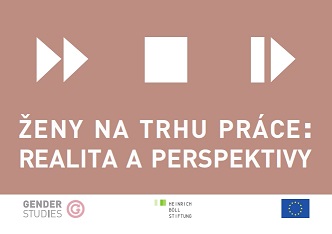
We kindly inform you that, as long as the subject affiliation of our 300.000+ articles is in progress, you might get unsufficient or no results on your third level or second level search. In this case, please broaden your search criteria.















First-generation Turkish immigrants in Sweden have started to reach older ages and to think about their old age and future care needs. Strong family and community ties, intergenerational solidarity, and cultural practices regulating marriage, socialization and care are believed to be a characteristic of Turkish families (Liljeström & Özdalga, 2002). However, as Finch and Mason argue, “responsibilities between kin are not straightforward products of rules of obligation, they are (…) the products of negotiation” (1993, p. 60). An increasing number of studies attempt to understand how families are made and remade in the migration context through care relations, responsibilities and negotiations (Baldassar, 2001, 2007, 2008; Bryceson & Vuorela, 2002). In this paper, I will highlight the role of emotions in negotiating and thinking about care responsibilities in a migration context and argue that emotions not only redefine transnational care practices but they also reshape the ways in which family responsibilities are imagined in diaspora space (Brah, 1996). After briefly describing the methods of the research, focus will be directed towards exploring the significance of emotions in migration studies. Then I will focus on a particular emotion – vefa – and discuss how it is translated into gendered care practices, by referring to three older Turkish women’s accounts.
More...
In the European Union, four main social functions of the state are currently emphasized: 1) protection against social risks, 2) maintenance of order and social peace, 3) investment in human resource development, 4) investment in social institutions. The description of the birth and development of the Polish welfare state and in the assessment of its present character – which is the aim of this text – includes the perspectives of all the groups of functions mentioned above, as well as the acknowledgement of the variability of their implementation over time (1918-2011).
More...
Unaccompanied minors or separated children (UMs) are children under the age of 18 who are outside their country of origin and came to Sweden unaccompanied by a parent or other legal guardian. Such migration has increased around the world and it is the most fragile type of migration across countries. This population is considered ‘vulnerable’ due to their young age during the fleeing process combined with the fact that they are unaccompanied by their parents or legal guardians (Derluyn and Broekaert, 2008; Derluyn and Vervliet, 2012; Rodriguez, et al., 2018). These children face heightened vulnerability to exploitation, and violations of their rights by virtue of their age and status. The global movement of unaccompanied and separated children presents challenges for children’s rights and well-being. Research on unaccompanied minors has often focused on vulnerabilities of this group (Derluyn et al., 2008). However, recent studies have increasingly stressed the strength, resilience, and agency of unaccompanied minors (UMs), despite the traumatic experiences and challenges (see e.g. Luster et al., 2010).
More...
In 2015, 379,766 Eritreans worldwide sought asylum in another country or were on the road (2015, UNHCR). In the last few years there has been a growing number of unaccompanied refugee minors (URMs) from Eritrea. Of the 33,380 Eritreans that applied for asylum in Europe in 2016 (IND, 2017), 2870 applied for asylum in the Netherlands, of whom 773 Eritrean URMs (CBS, 2016).
More...
Toplumsal cinsiyet, göçmen ve sığınmacı kadınların hem göç süreçlerinde hem de yaşam koşullarında merkezi bir öneme sahiptir. Sağlık ve eğitim gibi temel haklara yetersiz erişim, dil engeli ve genel olarak içinde bulundukları eşitsiz sosyal ilişkiler açısından göçmen ve sığınmacı kadınlar hem kadın hem de göçmen kimlikleri ile toplumda ‘ötekinin ötekisi’ olarak en dezavantajlı gruplardan birisidir. Göçmen ya da sığınmacı, hukuki statüleri farklı olsa da mevcut araştırmalar Türkiye’deki sığınmacı ve göçmen kadınlara yönelik cinsel ve toplumsal cinsiyete dayalı şiddet (CTCDŞ) biçimlerinin yaygınlığına işaret etmektedir (Toksöz vd. 2012; Yalçın, 2015; Kaşka, 2006; Kıvılcım ve Özgür Baklacıoğlu, 2015; Coşkun, 2017a; 2018). Toplumsal cinsiyet ve göç araştırmalarında belgelenmesine rağmen bu şiddetin beslendiği kaynaklara ve bu alanda toplumsal cinsiyete hassas psiko-sosyal ve ekonomik destek mekanizmalarına dair yetersiz çalışma bulunmaktadır (Buz, 2007; Cesur Kılıçarslan, 2001).
More...
Türkiye 2000’li yılların başından beri “uluslararası göç alan ülke” konumuna gelmiştir. 2011 yılı sonrasında ise Suriye’de yaşanan iç savaş sonrasında göç sürecini en yoğun şekliyle deneyimlemektedir. Göç, önceleri özellikle erkekler ve emek gücü açısından ele alınırken, kadın göçü 1980’li yıllarda, çocuk göçü ise 2000’li yıllarda tartışılma ortamı bulmuştur (Atasü Topçuoğlu, 2014: 94).
More...